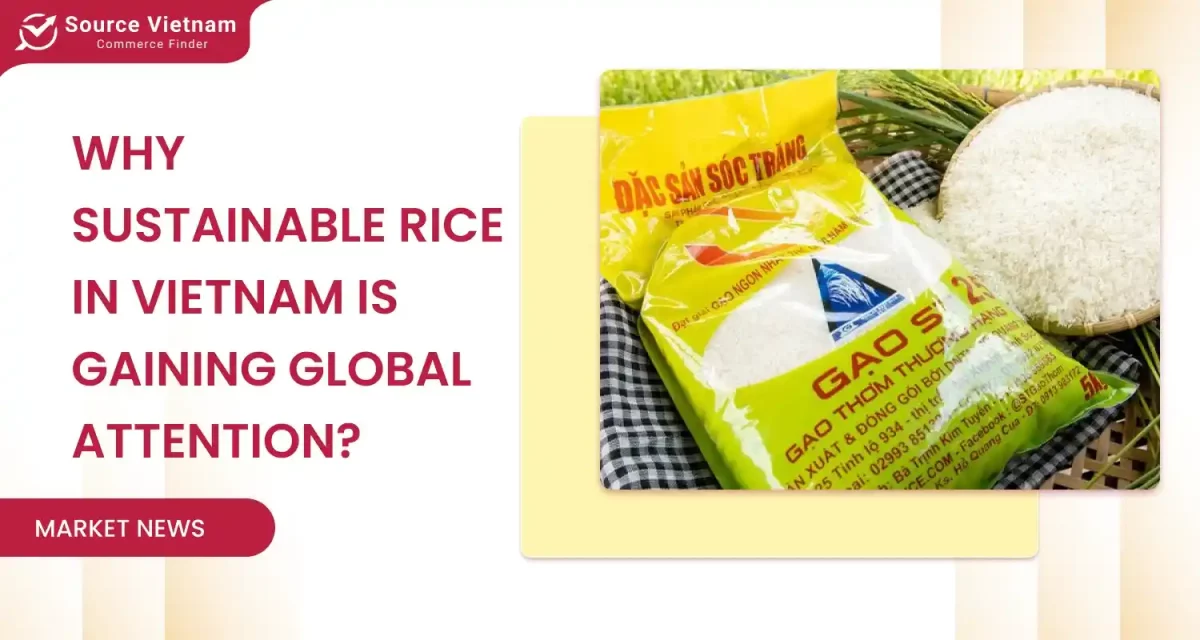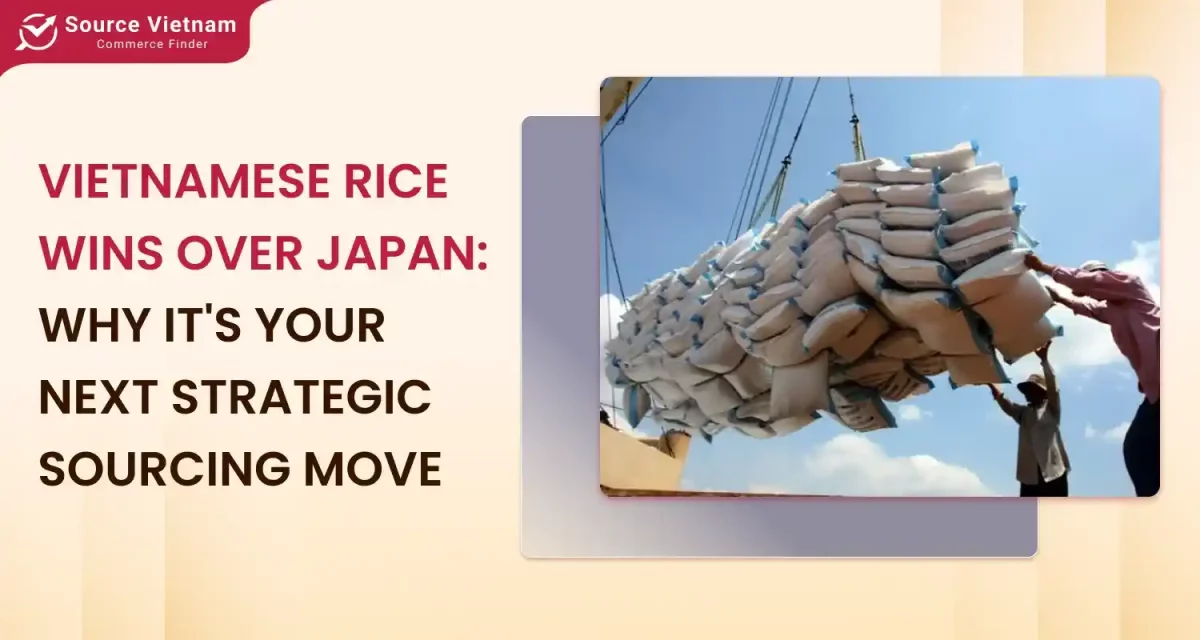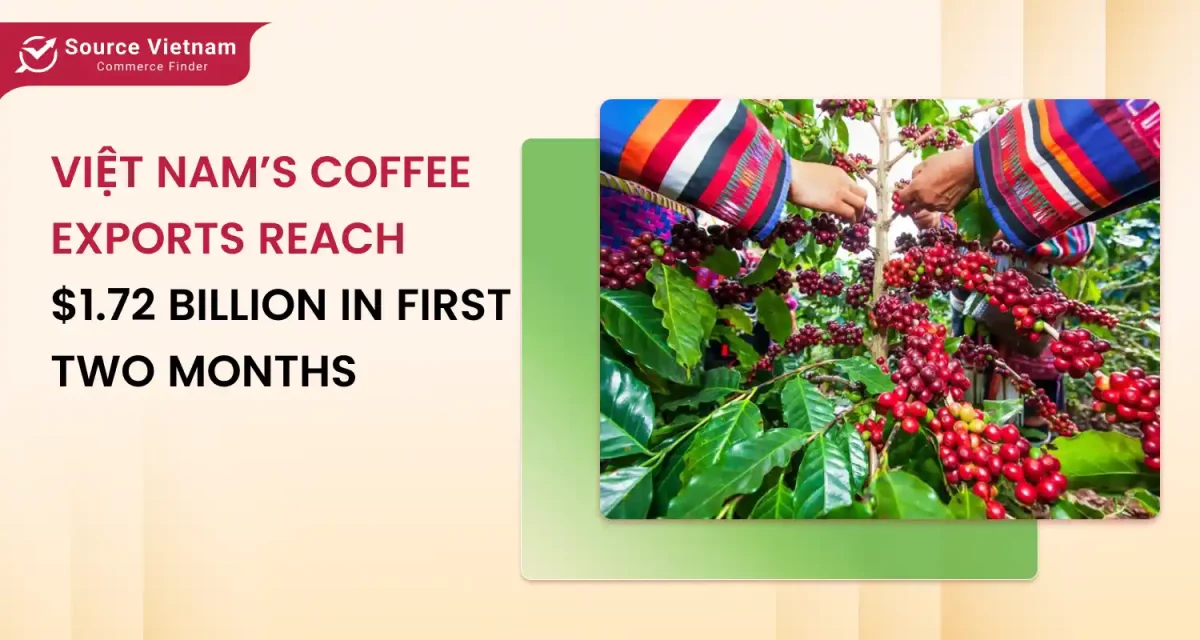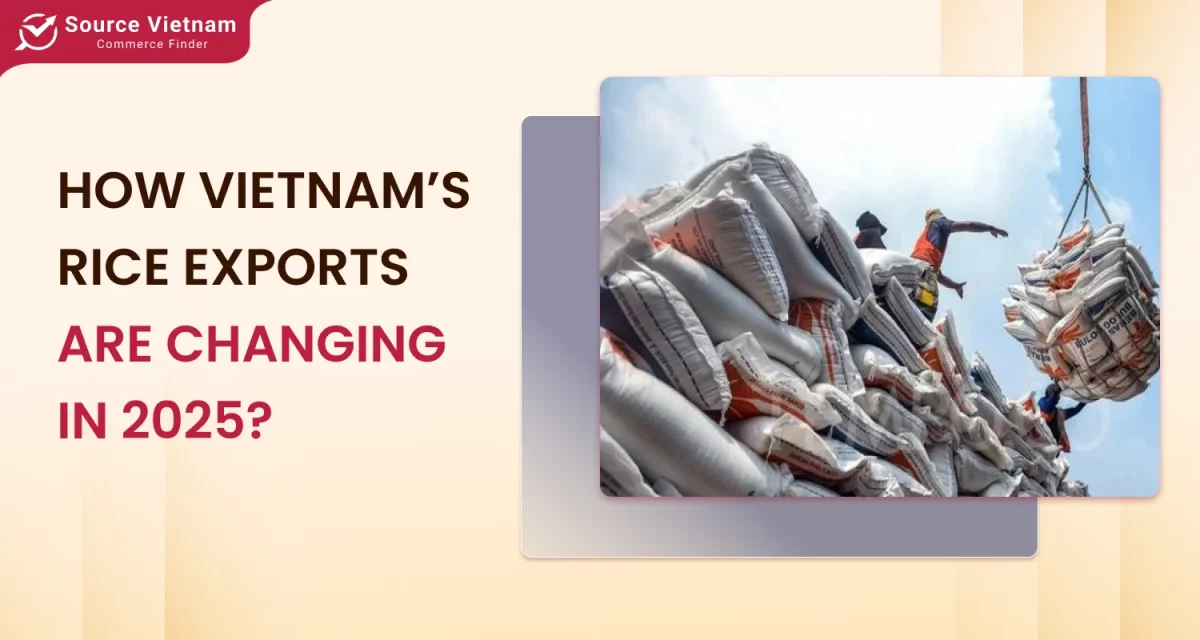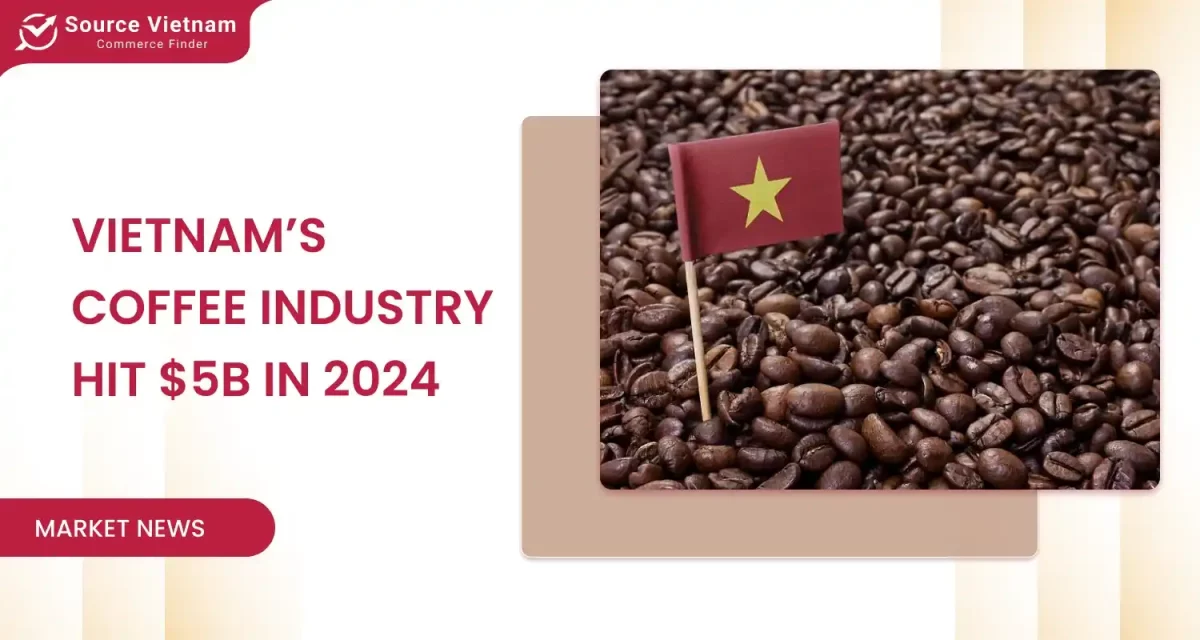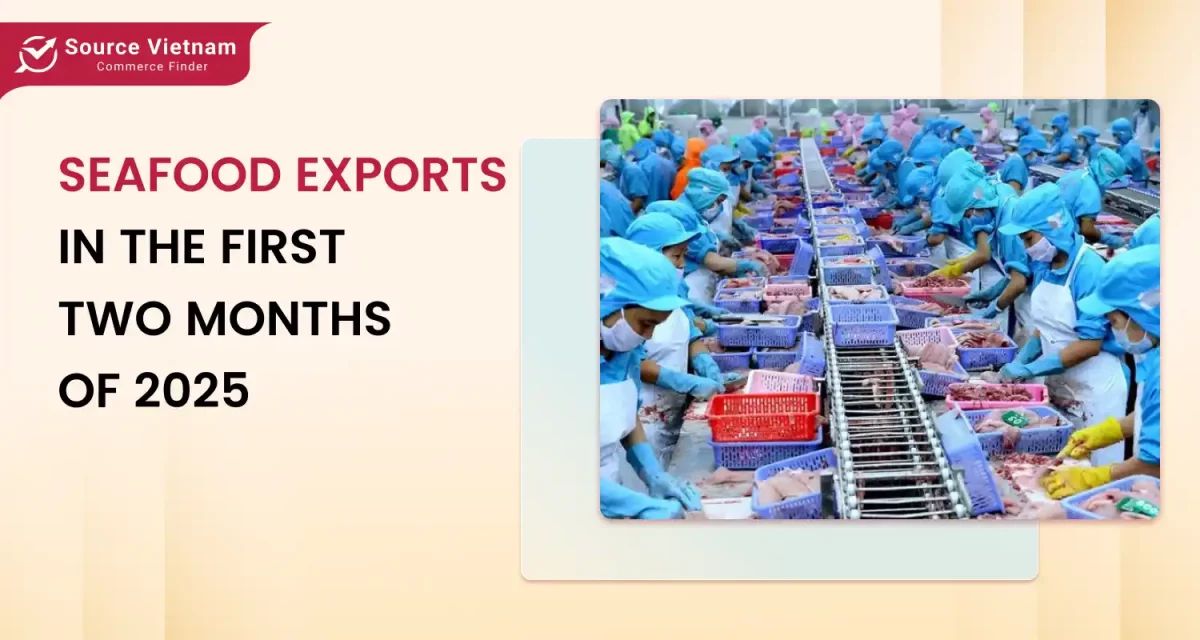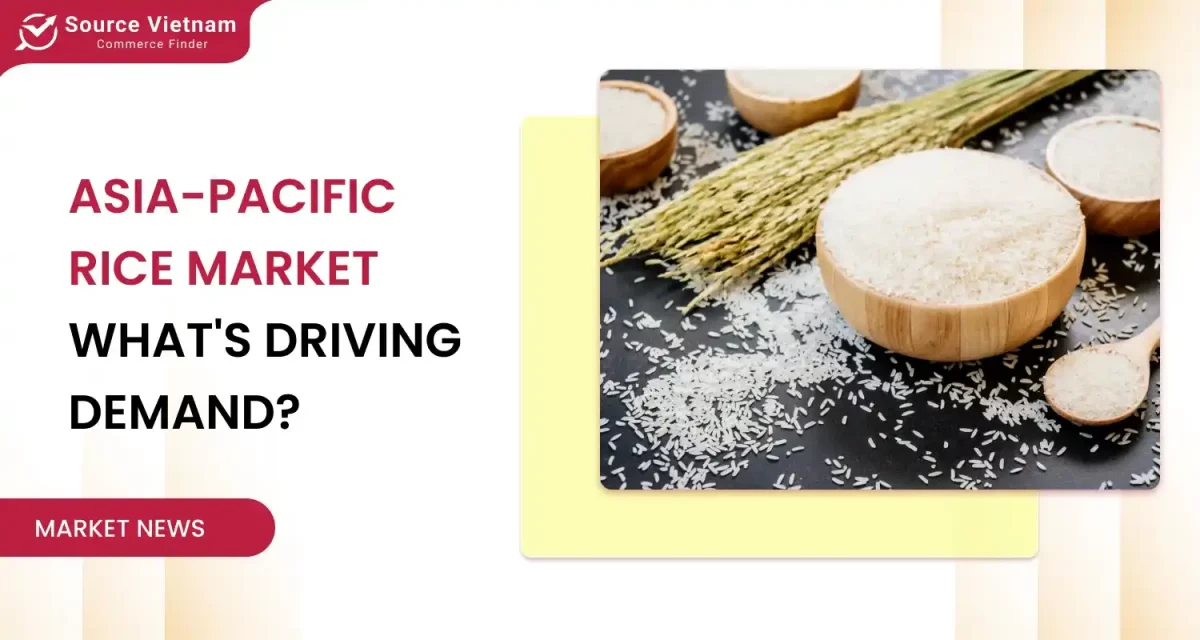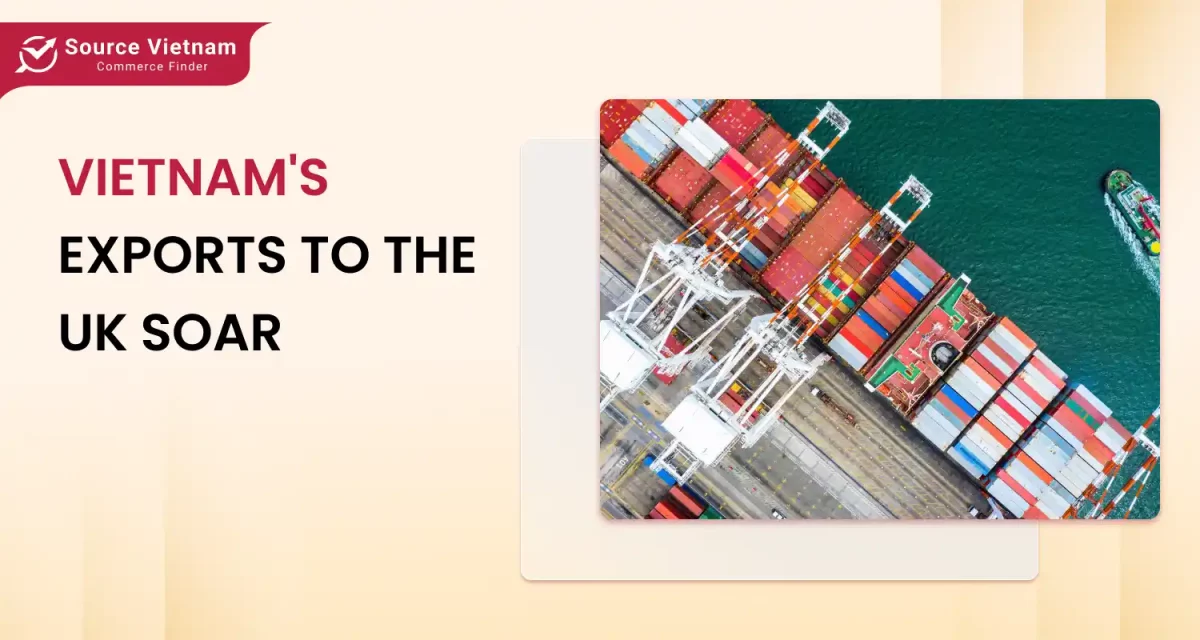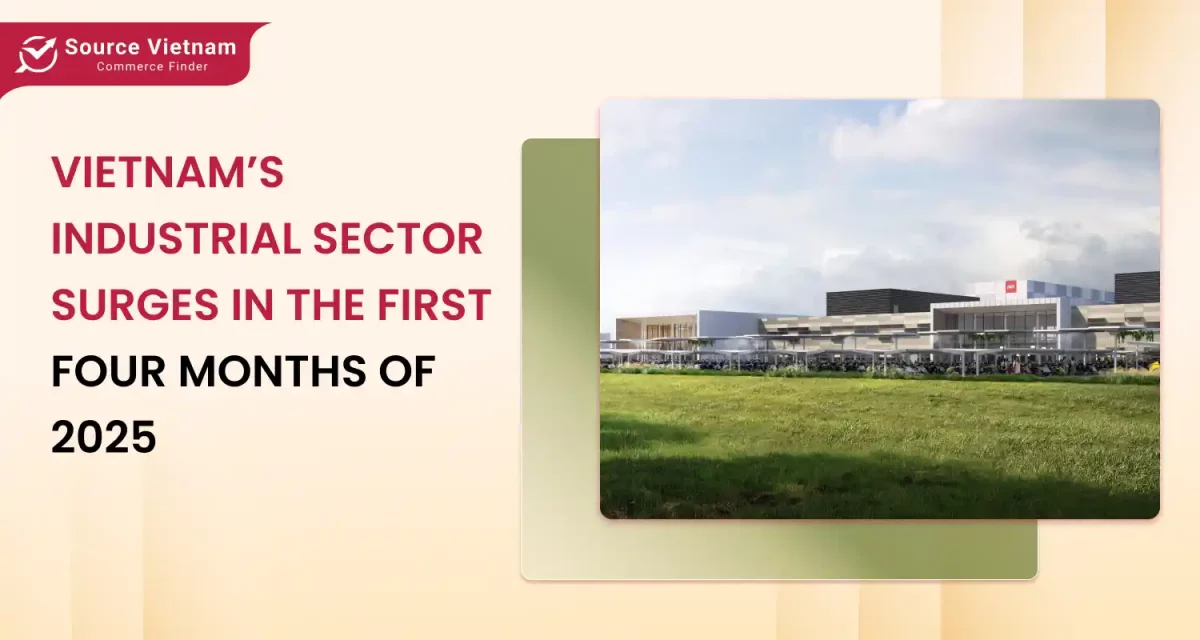Insight:
- The Vietnamese rice market in 2025 presents both opportunities and challenges. While improved quality and variety offer growth potential, increased competition and potential price drops pose significant hurdles.
- To succeed, businesses must prioritize quality, build strong brands, and be adaptable to market fluctuations.
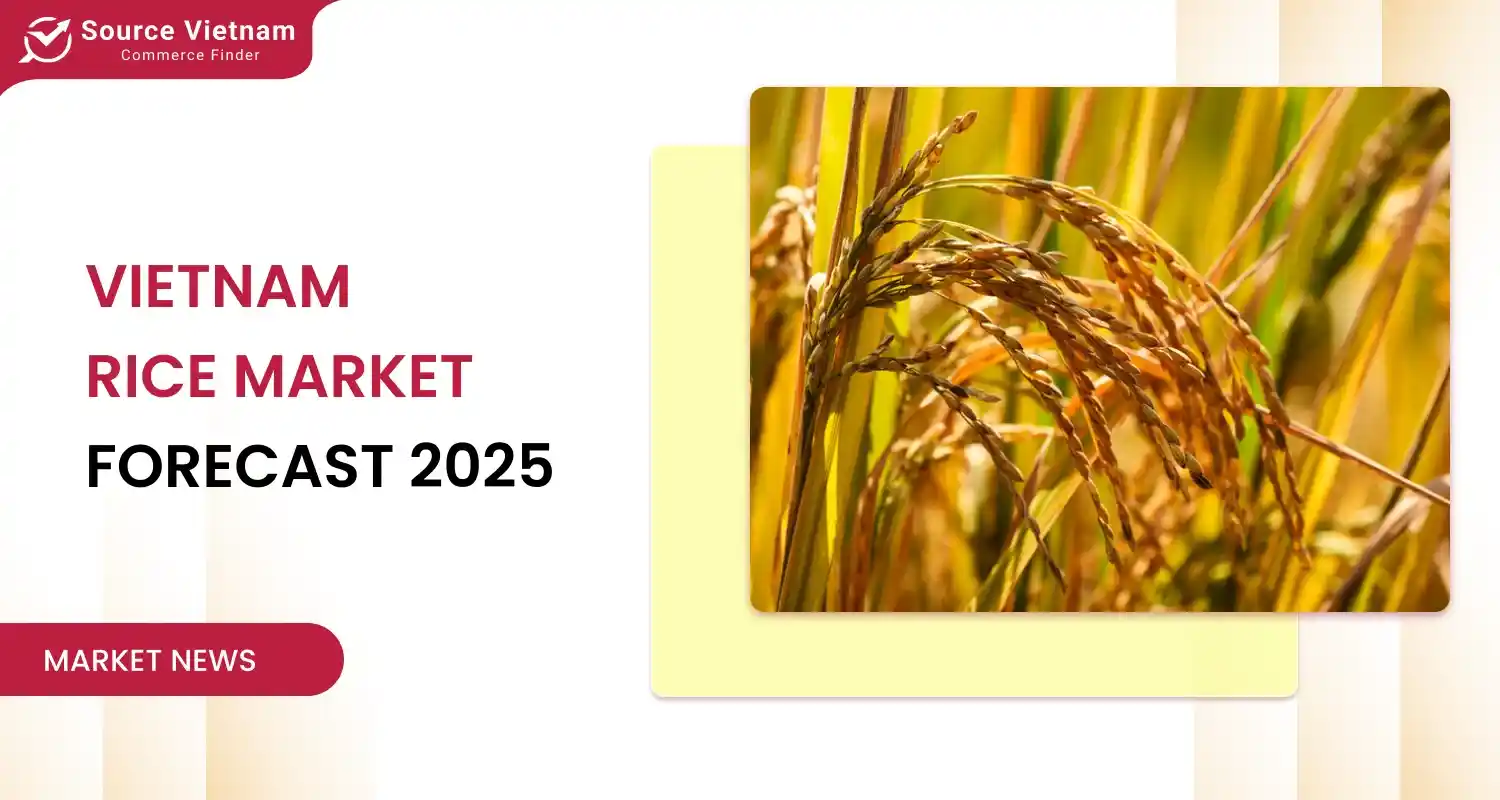
The rice market boomed in 2024
In 2024, impressive crop performance was noticed, with Vietnam playing a significant role. The country and two other countries remained part of the world’s top three rice-exporting countries as it exported 9 million tons of rice, estimated at $5.8 billion.
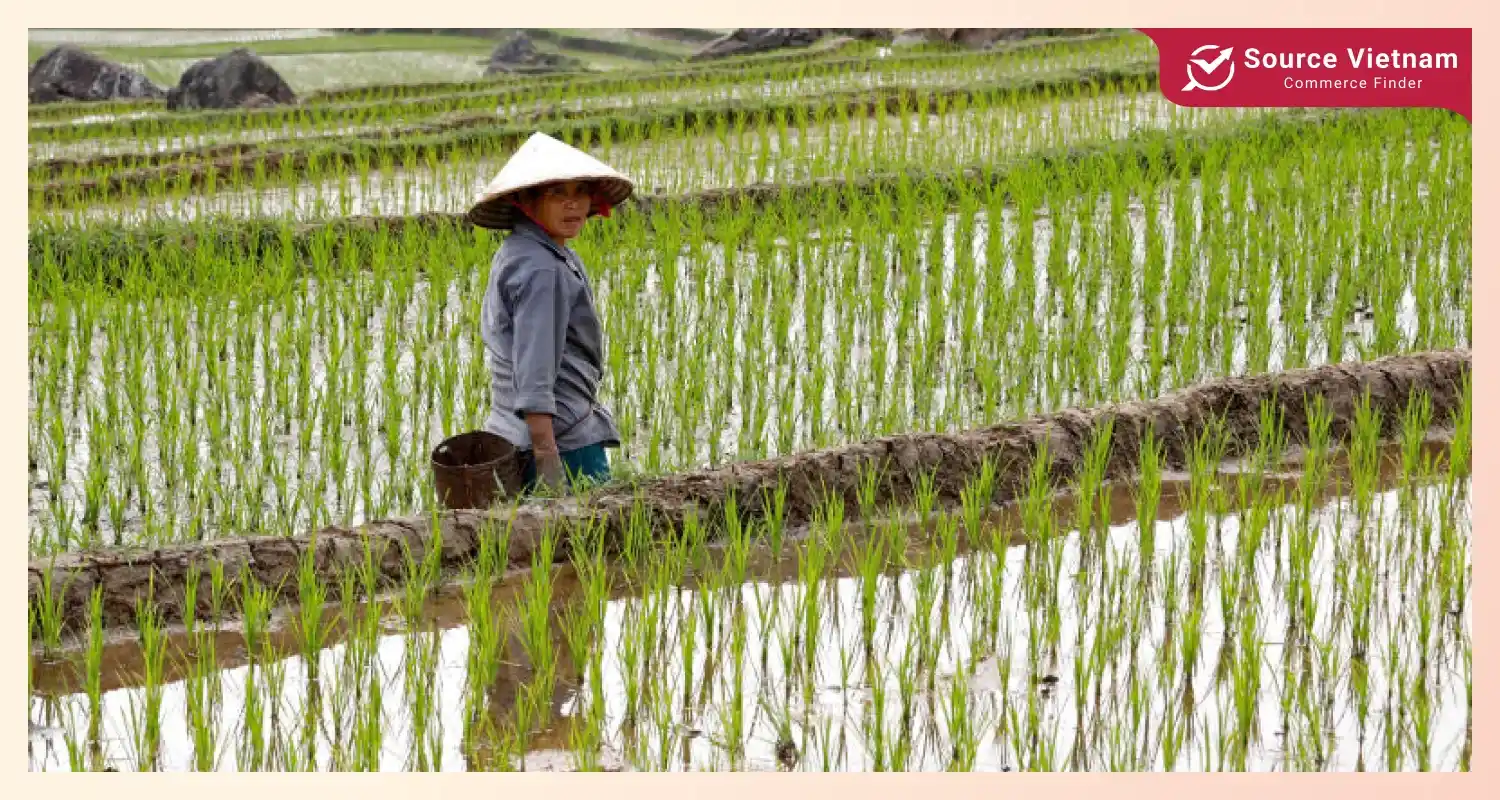
The figures are an increase in volume terms by 10.6% and an improvement in value by 23%. The export price of Vietnamese rice averaged 16.7% higher in comparison to 2023. This is a real success-the biggest breakthrough in 35 years of Vietnamese rice export. Vietnamese rice finds markets in about 150 countries and territories worldwide.
The largest importers of Vietnamese rice include the Philippines, Indonesia, Malaysia, Ivory Coast, and Ghana. The Philippines remains Vietnam’s top rice export market, and Vietnam is also the Philippines’ primary rice supplier. Premium and specialty rice varieties have been consistently exported to markets like the EU, Japan, and Malaysia at stable prices above $1.000 per ton. Demand from this premium segment has remained steady.
Rice prices hit impressive highs
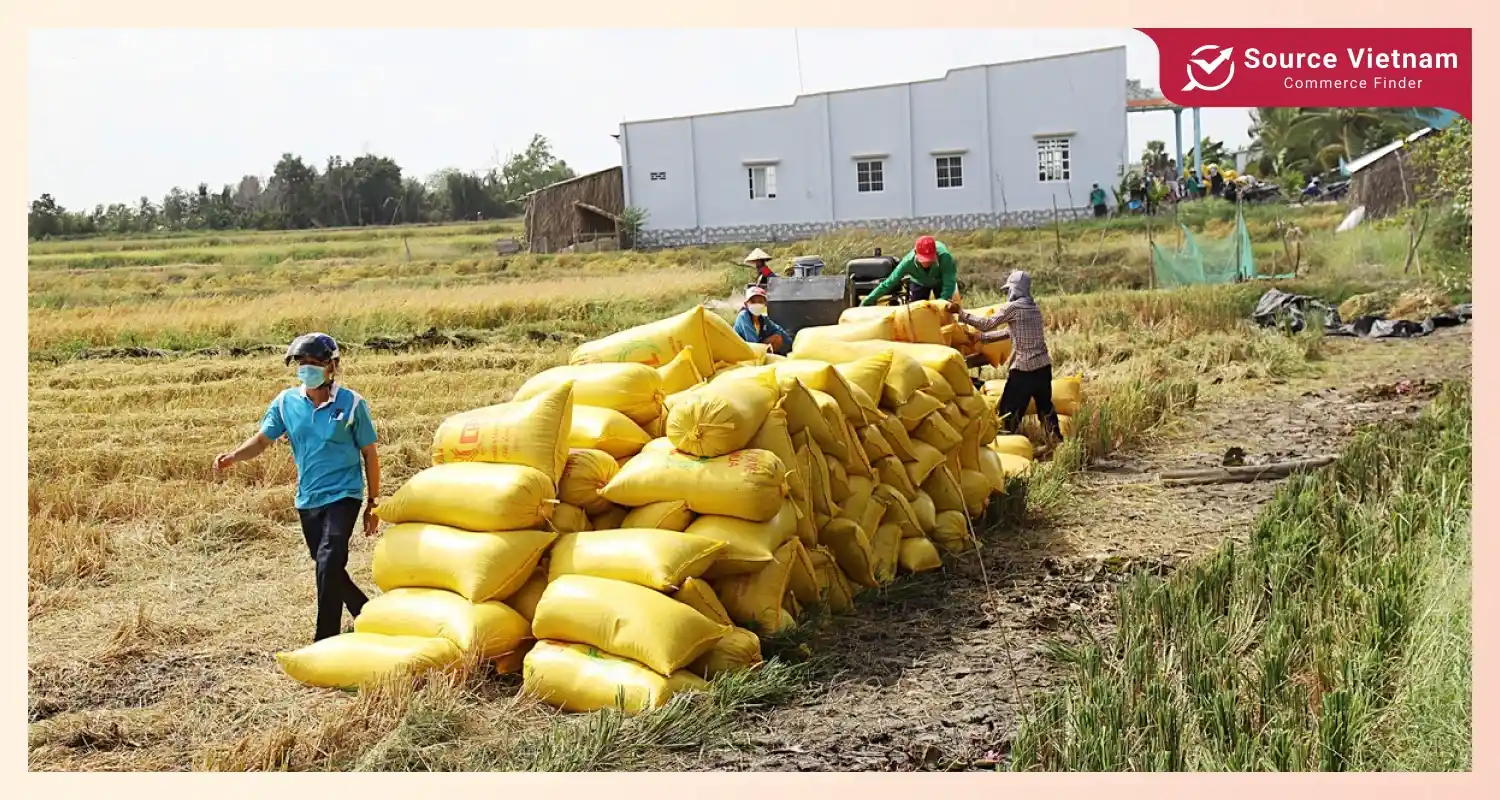
According to the Vietnam Food Association (VFA), as of October 18th, the price of Vietnamese 5% broken rice remained stable at $534 per ton, unchanged from the previous session. Notably, Vietnamese export prices are still $30 per ton higher than similar Thai rice, making it the most expensive in the world.
While prices have slightly adjusted downwards in line with global market trends, they’ve largely held steady at around $530 per ton, a level experts believe balances the interests of farmers and exporters. Experts note that consumers prefer Vietnamese 5% broken rice due to its superior taste and freshness compared to its competitors.

Furthermore, demand from traditional customers like China, Indonesia, the Philippines, and Singapore is expected to increase towards the end of the year. Rice exporters also believe that higher-end products like fragrant rice, sticky rice, and ST25 rice will remain unaffected by India’s re-entry into the export market. Demand for these premium Vietnamese varieties is still strong in markets like Japan, Europe, and South Korea.
Looking ahead: Opportunities and bright spots for 2025
According to the latest US Department of Agriculture forecast, global rice supplies will increase in 2025. Global rice exports are projected to rise by approximately 2.3 million tons to 56.3 million tons compared to 2024. Import demand in markets like the Philippines, China, and Nepal is also expected to increase due to anticipated price cooling.
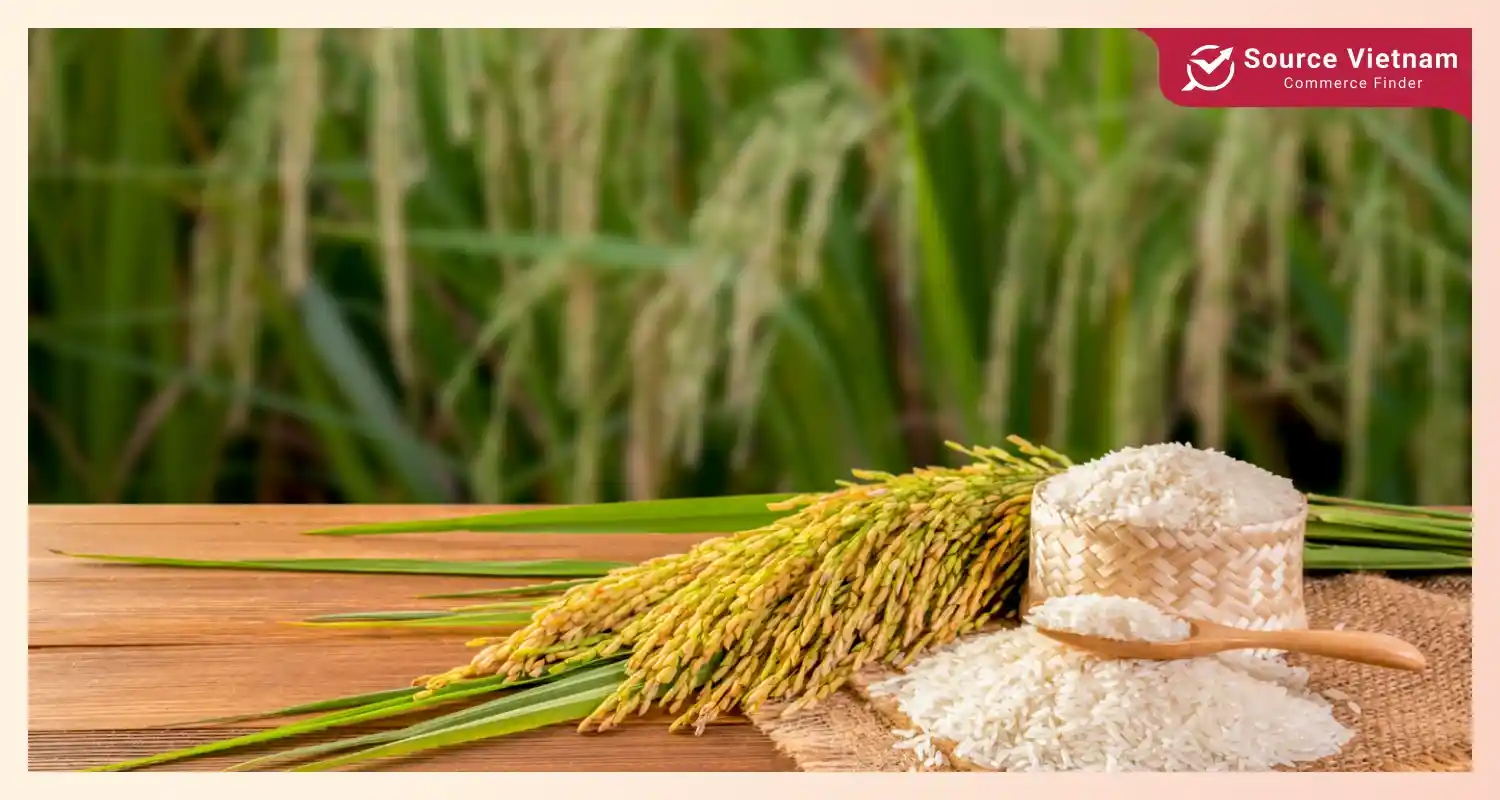
The global rice market is predicted to remain active. After Tet, rice supplies will increase as the Mekong Delta provinces begin their Winter-Spring harvest. Trading is probable to intensify. The world and domestic rice prices are anticipated to plunge compared to 2024 due to heightened competition for export market share.
Vietnamese rice has gained recognition in the premium segment for its specialty varieties like ST24, ST25, and Jasmine. While Vietnamese rice exporters are not afraid of competition from Thailand or Cambodia, they are concerned about domestic companies undercutting each other to secure orders. This “price war” can lead to the delivery of substandard products, damaging the reputation of Vietnamese rice.
Navigating the challenges in the rice market
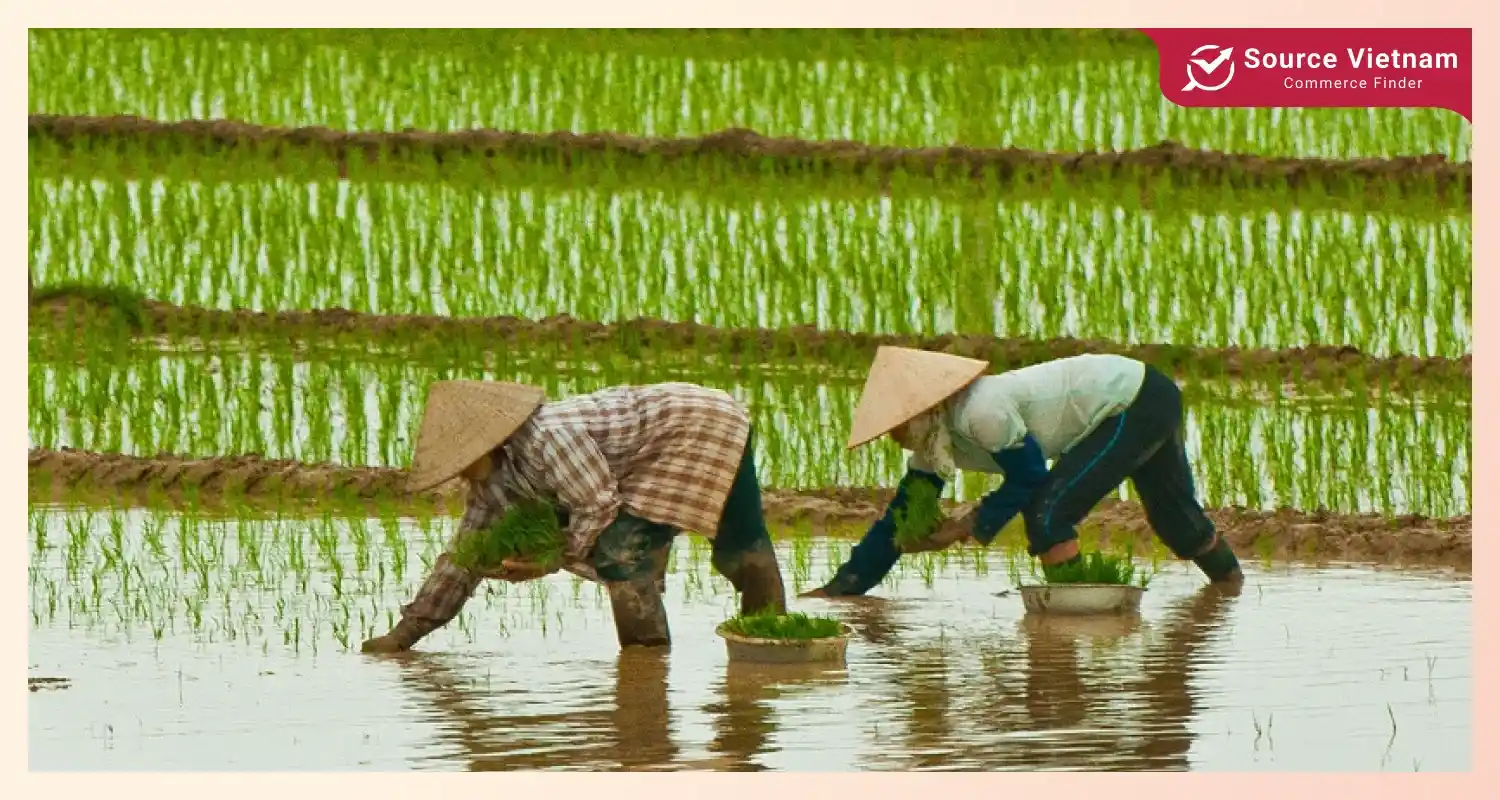
According to updates from the US Department of Agriculture (USDA), big boosts in global rice offerings are anticipated this year following a record 530 million tons in production, an increase of 3.1 million tons from the previously forecasted figure. As India removed its grain export ban and took away the export tax, the country’s domestic rice industry will face intense competition, providing an abundant supply for the world and downward pressure on prices.
Last year, exports to China plummeted to only 250.000 tons, a 71% decrease compared to 2023. This reflects China’s self-sufficiency strategy and its stricter requirements for quality and packaging. In this context, quality and branding will be crucial for Vietnamese rice to maintain its market share. Notably, at the beginning of 2025, rice export prices experienced a sharp decline.
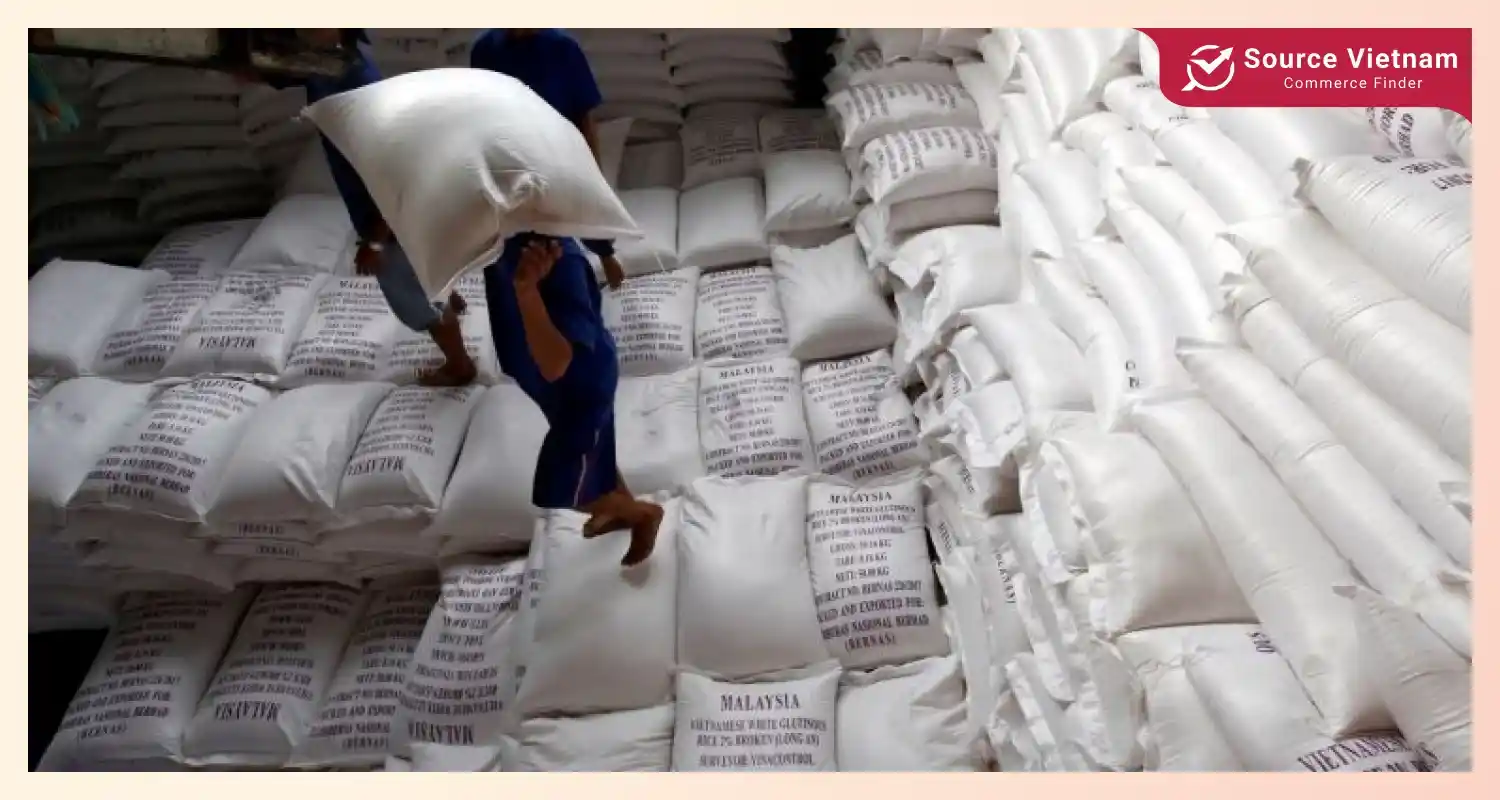
According to the Vietnam Food Association, as of January 16th, 2025, 5% of broken rice had fallen to only $419 per ton, a decrease of over $230 per ton compared to last year. This is mainly attributed to India’s aggressive export push after lifting trade restrictions and reduced demand as major importers like the Philippines and China entered their Lunar New Year (Tet) holiday period.
In light of these developments, rice exporters must be more proactive and flexible in their business strategies. Experts believe that this price decline will not last long. Thanks to Vietnamese rice’s competitive prices, quality, and convenient transportation, traditional markets are expected to resume contract signings soon. In reality, Vietnam is building a distinctive rice industry, focusing on high quality rather than low production. This approach will improve economic value and elevate Vietnamese rice’s standing on the global stage.
Conclusion
Overall, the Vietnamese rice market in 2025 will face both opportunities and challenges. Although prices may adjust downwards due to increased competition and supply, Vietnamese rice still has strong growth potential, thanks to its superior quality and diverse market segments.
Businesses need to be flexible and adaptive, concentrating on enhancing their brand and product quality to maintain their position in the international market. The right strategies will define 2025 as a decisive year for Vietnamese rice, consolidating its distinct stand with a focus on high quality.

